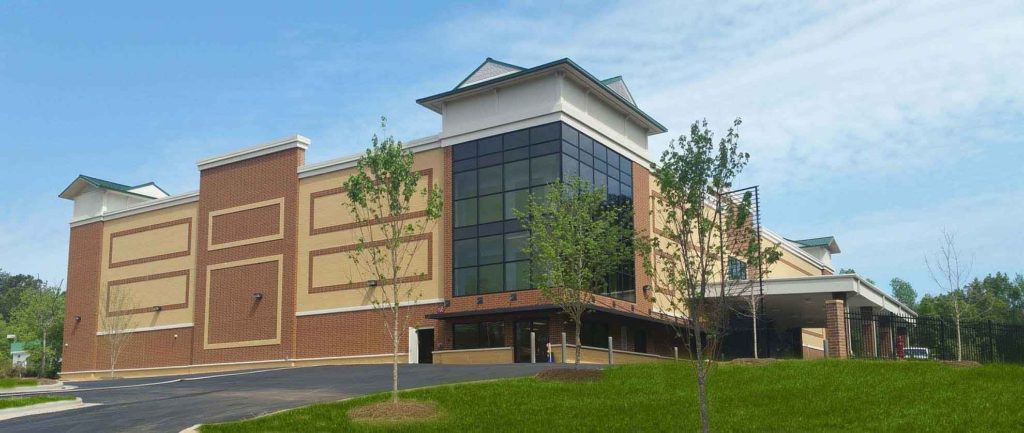When deciding on whether to proceed with a climate controlled self-storage facility, you may be wondering if it’s worth the added expense and whether you’ll see return on investment. According to industry experts, the addition of climate control typically means that self-storage owners can command higher rents than non-climate controlled self-storage, with an expected uptick of around 30% or more. If your business is based in a high-end demographic region, even greater returns may be realized from a customer base with more expensive, climate-sensitive items to store.
The Benefits of Climate-Controlled Storage Go Beyond Temperature Control
 A climate-controlled facility appeals to customers as it offers the additional benefit of protecting their valuables from the effects of humidity and time, and for this valuable feature they are willing to pay a premium.
A climate-controlled facility appeals to customers as it offers the additional benefit of protecting their valuables from the effects of humidity and time, and for this valuable feature they are willing to pay a premium.
In fact, most “climate-controlled” self-storage facilities operate by controlling humidity rather than the actual temperature—making the name “climate-controlled” a bit of a misnomer. When a storage area has a humidity reading above 60%, it can lead to problems like rust, dust mites, paper rot, mold, mildew, and wood degradation—just to name a few.
Typically, climate-controlled self-storage facilities will maintain a unit’s ambient temperature anywhere between 55-90 degrees Fahrenheit, with an optimal humidity level around 55%.
Climate-Controlled Self Storage Provides Protection For Everything From Art to Electronics
Depending on the level of humidity control, customers can store items like fine art, cigars, antique furniture, and even wine—offering the self-storage owner a potentially expanded, higher-end customer base.
In addition to the rare, high-end items that climate-controlled self-storage is known to accommodate, many customers prefer to protect their more common belongings from the elements as well. Climate-controlled storage is increasingly being used to store household electronics, DVDs, CDs, vinyl records, fabrics, valuable metals, paper and other important documents, family photographs, and book collections.
Climate-Control Takes Planning for Effective Project Execution
If you’re considering installing a climate-controlled system in your facility, consider the following points before making the leap:
Layout: Plan the building to be a minimum of 40 feet wide with an insulated corridor system and full insulation capacity at the interior walls. Additionally, any climate-controlled units should offer convenient access from the exterior. The climate-controlled interior corridors should be insulated as well to facilitate efficient climate control in each individual unit. To determine the most cost-effective layout for your facility, a single-source manufacturer like BETCO can offer design and engineering help through its full-time, in-house engineering team.
Heat and Air-Conditioning System: Be sure to install the HVAC units indoors, especially in more extreme climates. In addition to its temperature-control features, the HVAC should have a dedicated Humidistat to control the humidity in the system. Expect to install units that accommodate at least 1250 square feet per ton to adequately regulate temperature and humidity. To improve efficiency and cut costs, vents and registers should be installed throughout the facility to encourage airflow.
Programmable Thermostat: While you want to protect your customers’ valuables against the elements, you don’t want to go broke doing it. Consider installing a programmable thermostat—preferably one that can be adjusted by a smartphone or other remote method—so that the environment can be controlled based on season and temperature from any location.
Insulation: Adequate insulation is imperative when it comes to climate-controlled self-storage. Consult the engineer on staff at your self-storage manufacturer to help with the calculation of insulation values. You’ll need to determine the required cubic area of insulation for your project, and also whether it can be installed in the existing partitions or if modifications will be necessary.
Roofing: In addition to insulation, another option to consider when investing in climate control is a roof panel upgrade to mitigate extensive energy transfer through the roof of your building.
Cool Roof Technology panels are coated with cool metal paints, and they reflect up to 70% of solar heat compared with a standard roof coating at 20%. With an increase in efficiency, roof surface temperatures can be lowered by as much as 38 degrees—and most importantly, energy bills can be reduced by 23%. In addition to roof temperature benefits, Cool Roof Technology can decrease the ambient temperature of a building by as much as 46 degrees, and enable eligibility for a tax break for incorporating Energy Star materials.
Install Your Climate-Controlled Self Storage Building Components With Help From an In-House Engineer Staff
Adding a climate-controlled system and components from single-source manufacturer BETCO could be your key to staying profitable in today’s ultra-competitive marketplace. BETCO has been in business since 1984 and is an industry leader in single level and multi-story self-storage.
BETCO manufactures all the design expertise and components you need to bring your self-storage facility to full climate-controlled condition, including roofing, trim options, siding, wall panels, and customized metal parts. BETCO is unique in that in the planning stages, an Energy COMCheck is done to ensure that your building meets energy codes for the location of installation.
If you’d like more information on adding climate-control to your self-storage facility for maximum ROI and value, contact BETCO for a free consultation.


